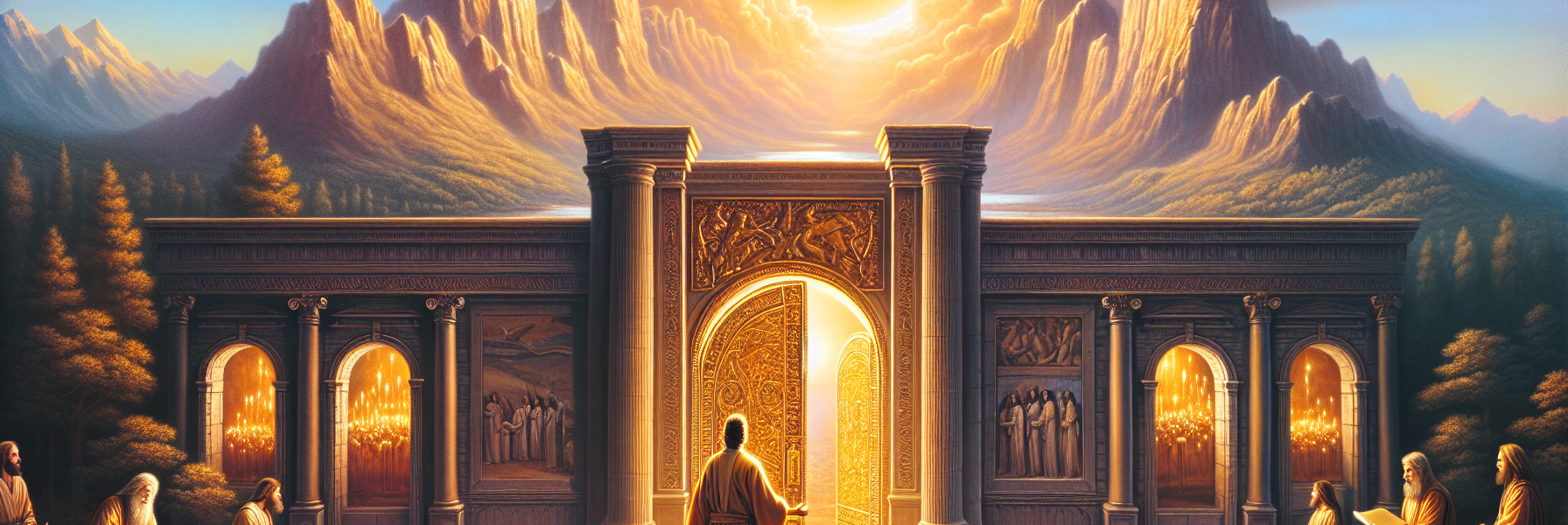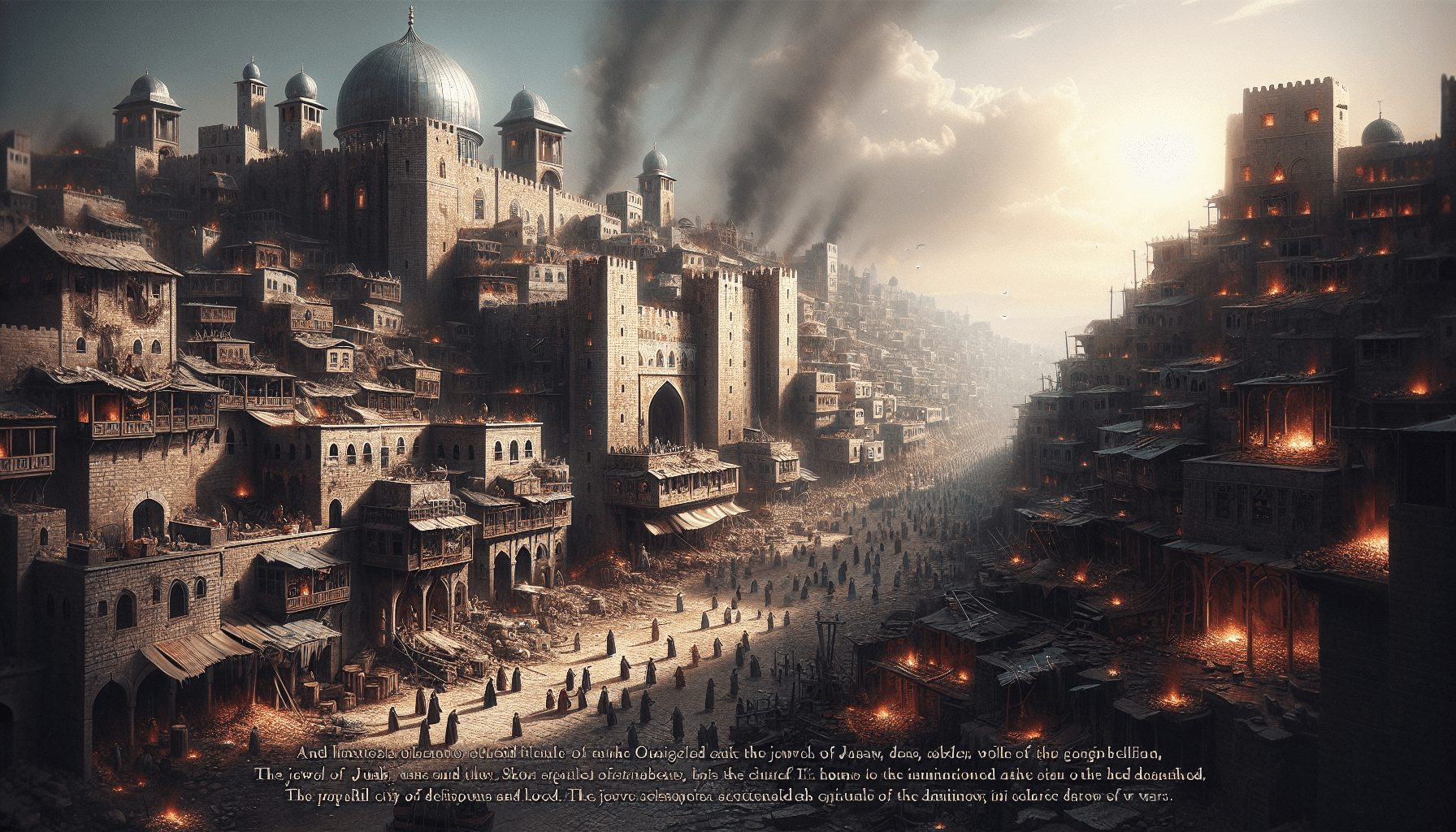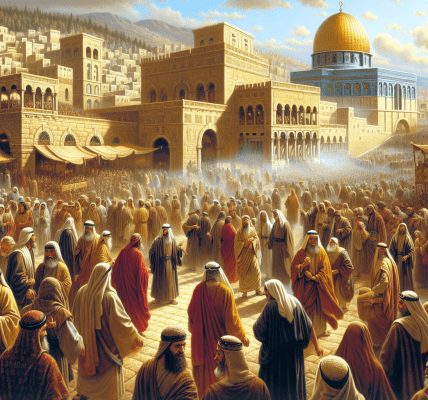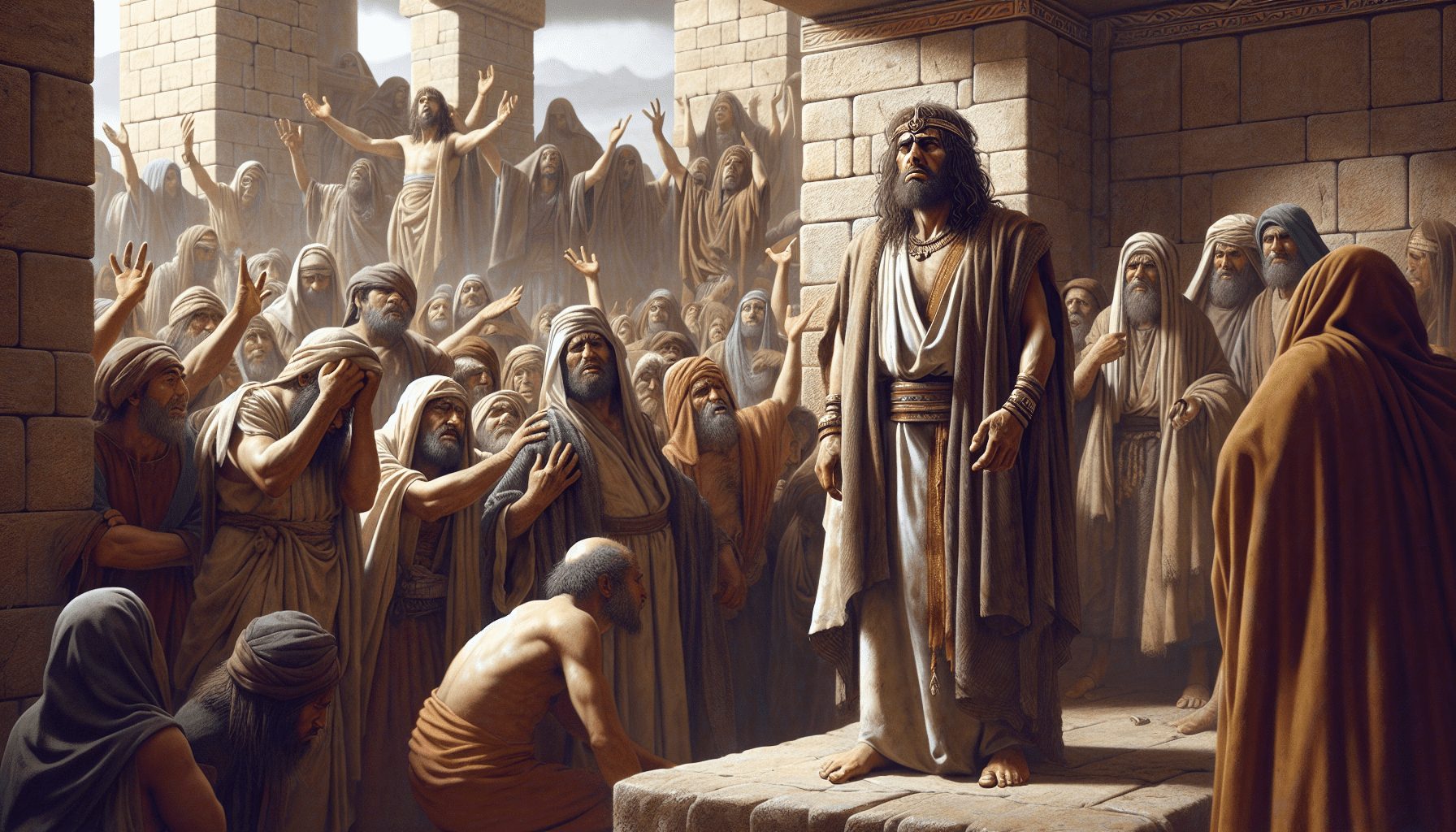**The Vision of the Sacred Chambers: A Detailed Account from Ezekiel 42**
The hand of the Lord had brought me again to the outer court of the temple, where the glory of God still lingered like the golden light of dawn upon the mountains. Before me stood the north and south gates, and between them, nestled against the inner wall, were the sacred chambers—holy rooms reserved for the priests who ministered before the Lord.
The man whose appearance shone like bronze, my divine guide, led me forward with measured steps. “Come,” he said, “and see the chambers where the priests shall eat the most holy offerings, where they shall lay aside their sacred garments before stepping into the outer court, lest they sanctify the people by mere contact.”
### **The Northern Chambers**
We approached the northern block first—a structure of solemn beauty, three stories high, with a series of rooms arranged in perfect order. The outer wall was of hewn stone, smooth and strong, and before the chambers ran a walkway, ten cubits wide and a hundred cubits long, leading to an inner passage.
The doors of the chambers faced north, allowing the priests to enter without crossing through the inner court, preserving the sanctity of the holy place. Inside, the rooms were identical—each one measured with divine precision: fifty cubits long and twenty-five cubits wide. The upper chambers were narrower than those below, for the galleries took up part of the space, tiered like the steps of a mighty altar.
I observed that the chambers had no pillars like the courts of the world; instead, they were supported by the strength of the temple itself, a reminder that the Lord alone upholds His servants.
### **The Southern Chambers**
Turning southward, we beheld another block of chambers, identical in measure and purpose. The symmetry was perfect, as though heaven itself had dictated their design. The man with the measuring reed walked before me, his voice steady as he explained, “These are the holy chambers where the priests who approach the Lord shall store the offerings—the grain, the sin offering, and the trespass offering. For the place is holy.”
Between the northern and southern chambers stood a building fifty cubits wide, separating the two blocks. Its purpose was clear: to divide the sacred from the common, ensuring that no defilement could pass unnoticed.
### **The Purpose of the Chambers**
As we walked through the passage between the chambers, the man turned to me and said, “The north and south chambers are for the priests who draw near to the altar. They shall eat there the most holy things and lay aside their linen garments before going out among the people, for the garments are sanctified by their service.”
I understood then the wisdom of the Lord in these arrangements. The chambers were not merely storerooms but places of transition—where the holy met the earthly, where the servants of God prepared themselves to serve both the sanctuary and the people.
### **The Measurements and the Meaning**
The man measured the outer wall of the chambers—five cubits thick—and the free space beyond them, twenty cubits wide, separating the temple from the outer court. The precision of every cubit spoke of God’s perfect order, His unerring design. Nothing was left to chance, for the Lord does all things with purpose.
As I gazed upon the chambers, I saw in them a reflection of the heavenly sanctuary, where every detail is ordained by the voice of the Almighty. The priests who would serve here must do so with reverence, knowing that they stood in the shadow of the divine.
### **The Conclusion of the Vision**
The man finished his measurements and stood before me, his eyes like flames of fire. “This is the law of the temple,” he declared. “Holiness shall mark its bounds, and those who serve must do so in purity.”
And I, Ezekiel, bowed my head in awe, for I had seen the care with which the Lord prepares a place for His servants. The chambers were not just stone and mortar but a testament to the holiness of God, who calls His people to come near—yet never without reverence, never without awe.
Thus the vision ended, but the truth remained: the Lord dwells in holiness, and those who serve Him must do so in righteousness, now and forevermore.




